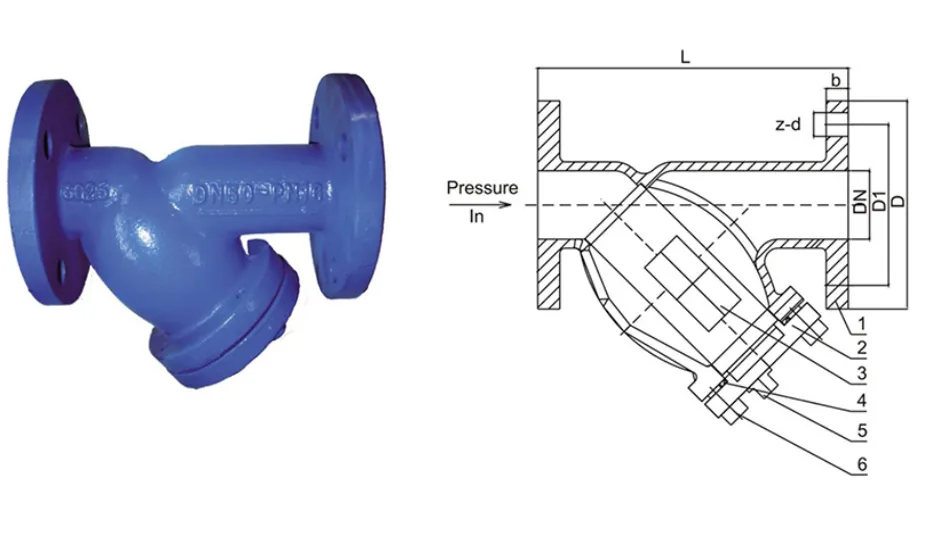10 月 . 13, 2024 22:02 Back to list
Wafer Type Butterfly Valve Design and Applications for Efficient Flow Control
The Wafer Style Butterfly Valve Design, Functionality, and Applications
In industrial applications, controlling the flow of fluids and gases is paramount for efficiency and safety. One of the essential components that facilitate this control is the valve. Among various types of valves available in the market, the wafer style butterfly valve has gained significant popularity due to its unique design, functionality, and suitability for numerous applications.
What is a Wafer Style Butterfly Valve?
A wafer style butterfly valve is a quarter-turn valve that uses a rotating disc to regulate the flow of fluid. Named for its distinctive butterfly-like appearance when the disc is opened, this type of valve is considered to be compact and lightweight, making it easy to install between two flanges in a piping system. Unlike traditional flanged valves, which require additional space and hardware, the wafer design integrates seamlessly, simplifying installation and reducing costs.
Design and Features
The construction of a wafer style butterfly valve typically consists of a circular body that houses the disc
. The disc is mounted on a shaft and is positioned in the center of the valve body. When the valve is closed, the disc creates a barrier against the flow; when it is opened, the disc rotates parallel to the flow, allowing fluids to pass without obstruction.One of the notable features of wafer style butterfly valves is their versatility in materials. They can be manufactured from various materials, including cast iron, stainless steel, and plastic, which enhances their application across different industries. Additionally, the sealing mechanism of these valves is crucial; they often come with elastomeric seals to ensure tight closure and prevent leakage.
Functionality and Benefits
wafer style butterfly valve

The primary function of the wafer style butterfly valve is to start or stop the flow of fluid. However, it can also be used for throttling services, making it suitable for regulating flow rate in various systems. Their quarter-turn operation allows for quick and easy adjustments, enhancing operational efficiency.
The benefits of using wafer style butterfly valves are numerous. Firstly, their lightweight and compact design facilitate handling and installation, particularly in spaces where larger valves would be impractical. Secondly, they have a relatively low pressure drop, which minimizes energy loss in the system. Additionally, their ease of operation contributes to reduced maintenance costs, making them a practical choice for many applications.
Applications
Wafer style butterfly valves are widely used across various industries, including water treatment, chemical processing, HVAC systems, and food and beverage processing. In water treatment facilities, these valves are often utilized for controlling the flow of water through filtration systems. In the chemical industry, they manage the flow of hazardous materials and aggressive fluids, where corrosion-resistant materials are essential.
In HVAC systems, wafer style butterfly valves play a crucial role in balancing airflow and pressure within ductwork. Their quick operation and reliable sealing capabilities make them ideal for systems that require frequent adjustments. Furthermore, in the food and beverage industry, these valves are preferred for their sanitary design, allowing for easy cleaning while minimizing contamination risks.
Conclusion
The wafer style butterfly valve stands out as a vital component in many industrial applications due to its unique design and versatile functionality. Its range of materials, lightweight construction, and efficient operation make it a popular choice among engineers and system designers. As industries continue to evolve and demand more efficient fluid control solutions, the wafer style butterfly valve is poised to maintain its significance in the future of fluid management systems. Through careful consideration of their design and application, these valves can enhance workflow, reduce maintenance times, and contribute to the overall efficiency of industrial operations.
Share
-
Understanding the Differences Between Wafer Type Butterfly Valve and Lugged Butterfly ValveNewsOct.25,2024
-
The Efficiency of Wafer Type Butterfly Valve and Lugged Butterfly ValveNewsOct.25,2024
-
The Ultimate Guide to Industrial Swing Check Valve: Performance, Installation, and MaintenanceNewsOct.25,2024
-
Superior Performance with Industrial Swing Check Valve: The Essential Valve for Any SystemNewsOct.25,2024
-
Industrial Swing Check Valve: The Ideal Solution for Flow ControlNewsOct.25,2024
-
You Need to Know About Industrial Swing Check Valve: Functionality, Scope, and PerformanceNewsOct.25,2024